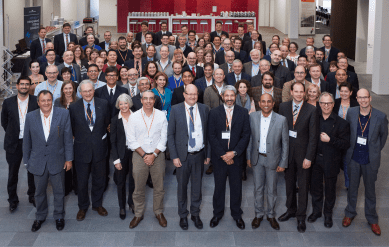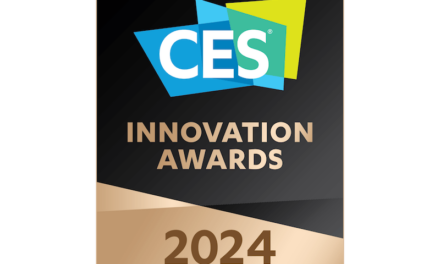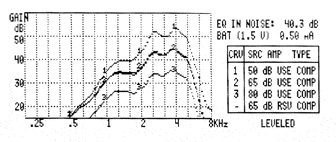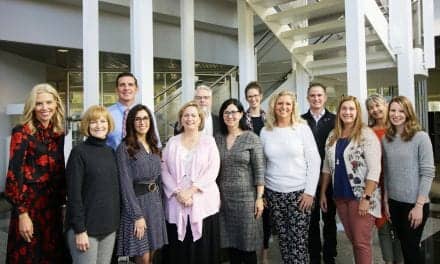Oticon Medical, Copenhagen, Denmark, recently held the company’s largest scientific conference to date, the third in a series of annual professional gatherings to explore advances, research, and future direction in hearing implant systems. More than 90 prominent clinicians, researchers, and thought leaders in otology/neurotology and audiology representing 24 countries attended the 3-day conference held at Oticon Medical headquarters in Copenhagen. The conference combined reports on the newest data and observations from the clinical world with discussion and presentations on advances in tissue preservation surgery and next-generation sound processor technologies that improve patient outcomes.
“Oticon Medical is a company committed to creating new possibilities and more choice in hearing implant solutions that optimize lifelong patient outcomes,” says Oticon Medical president Jes Olsen. “Our scientific forums provide unique opportunities for clinicians to acquire new competencies, skills, theoretical foundations, and methods with the potential to increase patient acceptance and satisfaction now and in the future.”
Two full days of scientific presentations, lectures, and roundtable discussions were arranged according to three tracks: one for surgeons and audiologists, and two, more focused tracks concentrating on surgery and audiology. On the second day, roundtable discussions focused on tissue preservation surgery, surgical outcomes in bone-anchored hearing devices, and the future outlook of bone-anchored and other implantable technologies.
Next generation technologies in bone-anchored implant systems were the focus of presentations by Marcus Holmberg, PhD, of Oticon Medical AB, and Arjan J. Bosman, PhD, of Radboud University. Dr Holmberg highlighted the technological improvements in the new Ponto Plus family of sound processors, including a new more powerful transducer, an improved feedback system, and wireless communication possibilities. Dr Bosman shared early performance data from Ponto Plus that confirmed the benefits of the stronger transducer, extended high frequency, and feedback management. His presentation also included a demonstration of the system’s built-in wireless capabilities and the new Ponto Streamer.
Malou Hultcrantz, MD, PhD, of Karolinska University Medical Hospital and Karolinska Institutet, shared the results of a 5-year study of flap, dermatone, and no skin reduction surgical techniques on three groups of implanted patients. The study found that tissue preservation and longer abutments resulted in shorter operating room time, less numbness, and less peri-implant infections, and is still safe after 5 years of follow-up. Dr Hultcrantz also observed that the ISQ measurement suggests that shorter loading times are now possible: 4-6 weeks for children and 4 weeks for adults.
Kay Chang, MD, of Stanford University Hospital and Lucile Packard Children’s Hospital looked at issues in pediatric bone-anchored surgery and the movement of many surgeons to single-stage surgery for children. Dr Chang pointed out the better outcomes achieved with bone-anchored implants versus those resulting from atresiaplasty surgery.
Måns Eeg-Oloffsson, MD, PhD, of Sahlgrenska University Hospital, and Bo Håkansson, PhD, of Chalmers University of Technology, discussed the trend behind the development of the Bone Conduction Implant (BCI), a bone conduction device with an intact skin solution. Drs Eeg-Oloffsson and Håkansson presented clinical results of the first six implanted BCI patients and objective measures of the new system.
Dan Gnansia, PhD, of Neurelec, shared results of research projects with atraumatic Evo electrode-array and the newly released Saphyr Neo Collection speech processor that includes VoiceTrack noise reduction and Crystalis XDP coding strategy. The studies conducted by Neurelec clinical and scientific departments showed improved clinical outcome and provided insight for future project development.
Oticon Medical’s Martin Johansson, MSc, gave conference participants an overview of biological events taking place around a percutaneous implant and reviewed relevant strategies for mitigating these problems, including factors related to abutment design.
Research findings of a study on patients who underwent tissue preservation surgery with the Ponto Wide Implant were presented by Soren Foghsgaard, MD, of Gentofte Hospital/Rigshospitalet. The study showed that use of a wider (4.5mm) implant improves stability of the implant in bone with expected ISQ values over time. No adverse skin reactions, implant extrusion, or need for revision surgery was found.
Jack Wazen, MD, of Silverstein Institute, reviewed the evolution of surgical techniques, implant characteristics, and processor improvements. He raised concerns about possible inflammation and increased healing time with certain abutment surfaces, a concern shared by several surgeons participating in the discussion.
The ideal bone-conduction hearing device (BCHD) and the many technical challenges to achieving this ideal were presented by Manohar Bance, MD, of Dalhousie University. Dr Bance showed 3D graphics of the impact of vibrations on the skull and confirmed trends toward more implantable solutions, as well as toward more nonsurgical options and consumer products.
Learnings and insights from bone-anchored implant programs at two renowned teaching hospitals were presented by Sarah Sydlowski, AuD, PhD, of the Cleveland Clinic, and Hasmat Ghulam and Terry Nunn, of St. Thomas Hospital, London. Dr Sydlowski emphasized the importance of objective assessment of candidacy and reviewed the clinic’s focus on evaluation protocol, surgical/audiological outcomes, and long-term patient management. Ghulam discussed the benefits of a digital bone-anchored hearing device (Ponto) over analogue devices and compared the benefits of each with respect to speech in noise, based on patient questionnaires.
In his presentation, Gary Norman, AuD, of Dublin’s National Audiology Programme, pointed out the need for technical equipment to measure the force output produced by the range of bone-anchored solutions now available. He discussed the first clinically accessible system—Interacoustics SKS10 skull simulator—to provide a platform for clinicians to quality assure and validate device function.
Bill Hodgetts, PhD, Associate Professor in the Department of Speech Pathology and Audiology at the University of Alberta, discussed the ongoing development of a generic prescriptive rationale for bone-anchored devices (a DSL version), and the aspects taken into account to ensure audibility. He provided a preview of how the prescription, verification, and validation fitting flow for bone-anchored devices might work in the future.
The conference allowed time for participants to tour Oticon Medical headquarters and visit the company’s research and reliability facilities.
“Significant advances in both surgical and audiological aspects of hearing implant systems are creating exciting new possibilities for increased benefit and more choice for both patients and professionals,” shares Ravi Sockalingam, PhD, Oticon medical director of clinical research and professional relations. “Our goal is to provide forums that report on the newest data and observations from the clinical world, especially those that identify and use clinical outcome measures that incorporate a patient-centered approach to quality of life benefits and extend the potential for treatment and successful outcomes.”
Source: Oticon Medical





